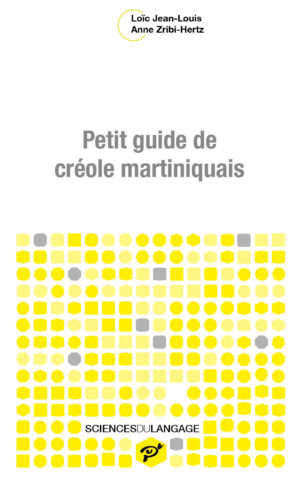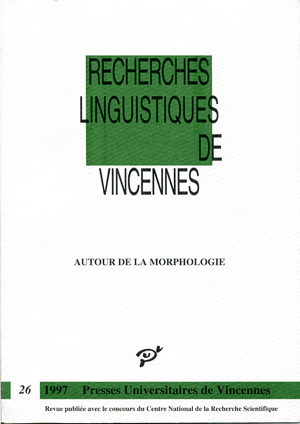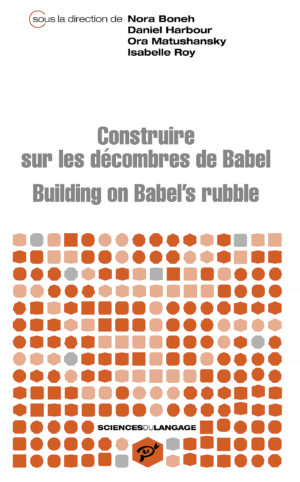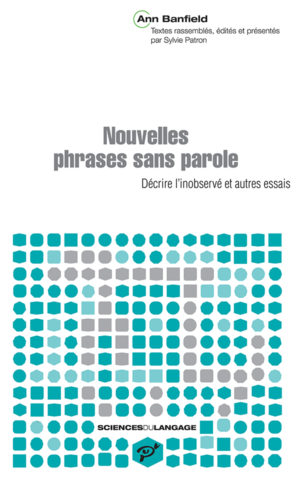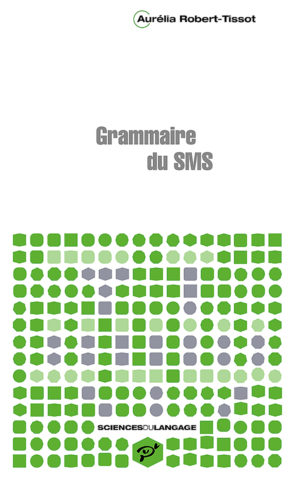Danielle Corbin : « La représentation d’une “Famille” de mots dans le Dictionnaire dérivationnel du français et ses corrélats théoriques, méthodologiques et descriptifs »
This article proposes an analysis and a representation, within the framework of an experimental dictionary based on a morphological theory, of the primitive lait and some of the words morphologically constructed from it (allaiter, allaitement, délaiter, laitage, laiter, laiterie, laiteux, laitier ). The theoretical and methodological presuppositions of the analysis are made explicit, and arguments are provided in favour of the chosen representation of the morphological and semantic properties of each word, within a more general theory of French morphology. Special attention is given to a detailed and analytical description of lexical meaning (constructed meaning and referential meaning).
Claude Gruaz : « Catégories lexémiques et catégories morphémiques dans les familles synchroniques dérivationnelles du français »
The notion of synchronic derivational family allows to define several categories of derivational lexemes arranged in macrofamilies, families, subfamilies and microfamilies. From another point of view, the lexemes and morphemes belong to homological categories, regular, marked or non transparent. The synchronic familial structure opens prospects in the semantic field, where it allows to determine recurrent semantic units, and in the pragmatic field, where it links associations of morphemes and their semantic variations.
James Harris : « Why n’ho is prononced [li] in Barceloní Catalan ; morphological impoverishment, merger, fusion, and fission »
Colloquial Barcelona Catalan ( Barceloní ) has 14 phonologically distinct pronominal clitics ( contrasting in person, number, gender, case, anaphoricity ), which can appear in clusters of up to six members. Many clitic clusters cannot be resolved into linear strings of syntactically and semantically motivated elemnts : members may appear in syntactically unpredictable orders, their overt inflections may conflict with syntactic properties, there may be more or fewer clitics than syntactic or semantic roles, etc. Syntax and semantics alone cannot provide a satisfactory account of these data : a substantial subset of the generalizations are purely morphological. Their proper formalization entails an autonomous Morphology Component of grammar wherein operations of impoverishment, merger, fusion, and fission modify syntactically generated hierarchical structures prior to insertion of phonological matrices from the Vocabulary module.
Bernard Fradin : « Esquisse d’une sémantique de la préfixation en anti – »
This article aims at describing the semantic behaviour of lexemes such as antiX where X is a noun or an adjective based on verbal present participle. Several empirical arguments are provided to show that, in its oppositive uses, the semantic functioning of anti – involves a causality relationship. This article focuses on the way the meaning of both the base-lexeme and the noun that antiX qualifies have to be taken into account to calculate the interpretation of antiX lexemes. This interpretation can be fully achieved only at the level of the phrase in which these lexemes appear.
Marc Plénat : « Morphologie des dérivés en –VCHE »
The bulk of the article consists in a description of French suffixal derivation in -oche, -uche, -iche, etc., based on the analysis of a corpus of about 650 derivatives. It is shown that this type of word formation is subject to numerous formal constraints, in particular those of length and dissimilation. The description put forward suggests that a formal treatment which appeals to rules would not be adequate. The best way of proceeding would probably be to make use of hierarchised surface constraints which are partly in conflict and therefore defeasible, in line with Optimality Theory. Nonetheless, characterising the way in which these constraints interact raises formidable problems, and it would seem in the last analysis that a formal account of the phenomena described would need to weight the relevant constraints rather than simply rank them.
Marcus Maia : « The processing of object anaphora in brazilian portuguese »
The results of two psycholinguistic experiments show that the processing of Brazilian Portuguese overt and nonovert objects is consistent with the leading idea underlying the Overt Pronoun Constraint Montalbetti (1984) : in languages which allow an overt pronoun and an empty category, the overt pronoun specializes in the coreferential reading and the empty category in the bound reading. Additionally, we claim our experiments to be informative with respect to several theoretical psycholinguistic issues : the psychological reality of gaps, the effect of the global topic of discourse in reference resolution, the rapid access by the parser to the argument frames of predicates.
